Slide ID #1 Mesoamerica
1/36
Earn XP
Description and Tags
lets get this 100%
Name | Mastery | Learn | Test | Matching | Spaced |
|---|
No study sessions yet.
37 Terms
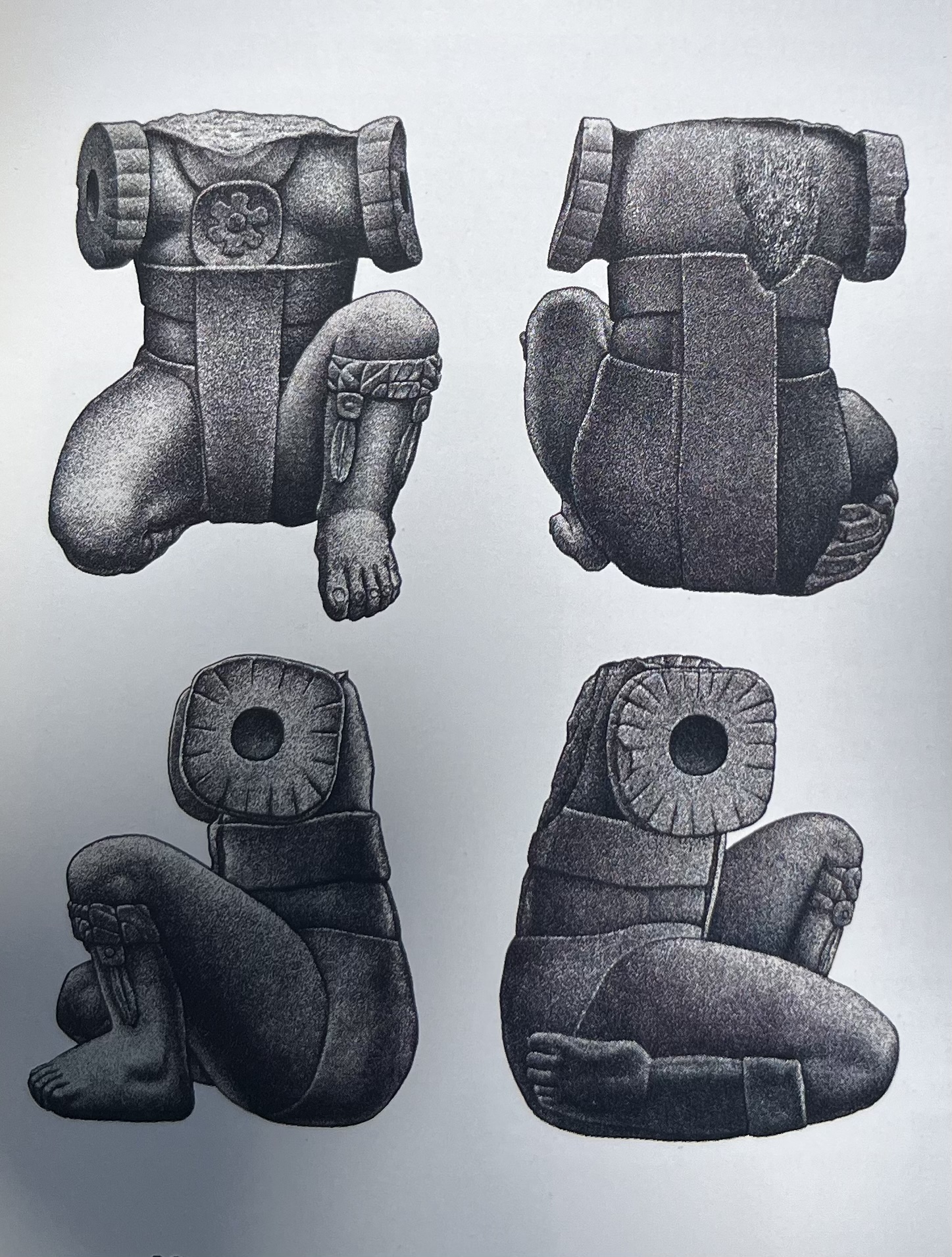
Monument 34
Early Preclassic
c. 1200 bce-900 bce
Olmec
San Lorenzo
Subject: stone carved, deliberatly beheaded, covered with limestone fill, deliberatly buried.
perishable, movable arms, costume detail, knots carefully worked, relief that is tactile.
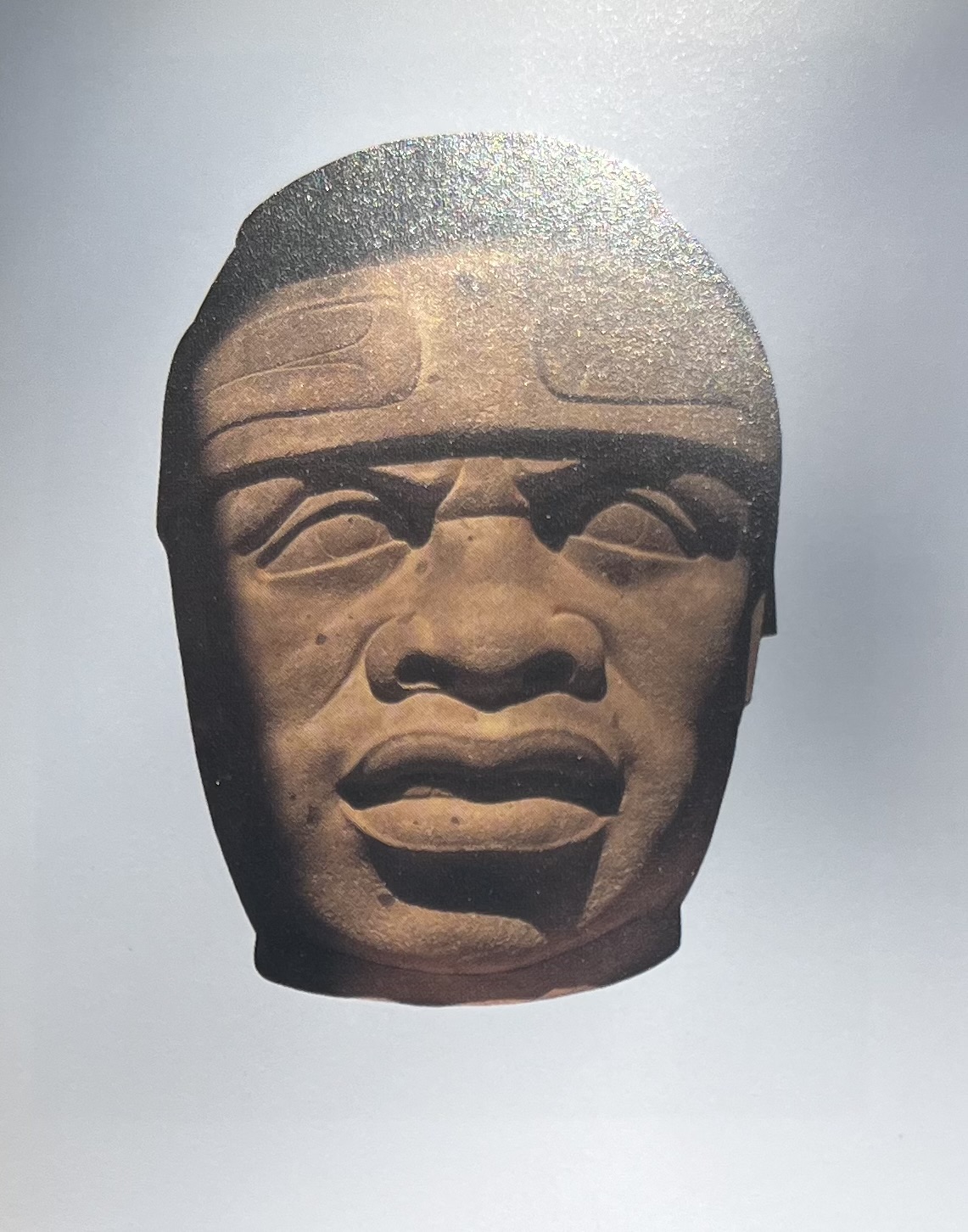
Colossal Head #8 (monument 61)
Early Preclassic
c. 1200 bce - 900 bce
Olmec
San Lorenzo
subject:
Monolithic, stone carved, stone coming from 60 miles away
individual characteristics, formed of Basalt
understanding of muscular/skeletal features
dramatic beacons atop multicolored mound
believed that heat restored in the head or lied in the head.
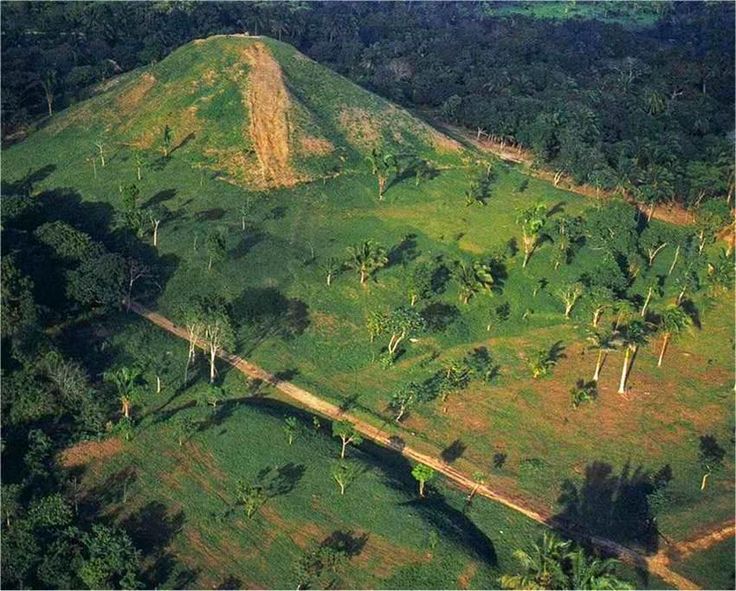
Pyramic C (Great Pyramid)
Middle Preclassic
c. 900-300 bce
Olmec
La Venta
Subject: 100 ft pyramid
originally faced w/ stone
stable form of building
functions as fundamental structure
designed for a shrine on top
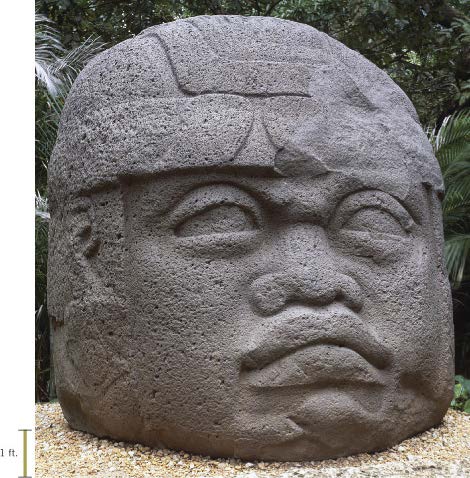
Colossal Head #1
Middle Preclassic
c. 900 bce-300 bce
Olmec
La Venta
subject:
facing outward
power/protective function
abandoned by 900, evidence of deliberate devistation
rawstone came from Tuxla Mountains
“move mountains”
Guarding, royal power
broader, squatter than in San Lorenzo
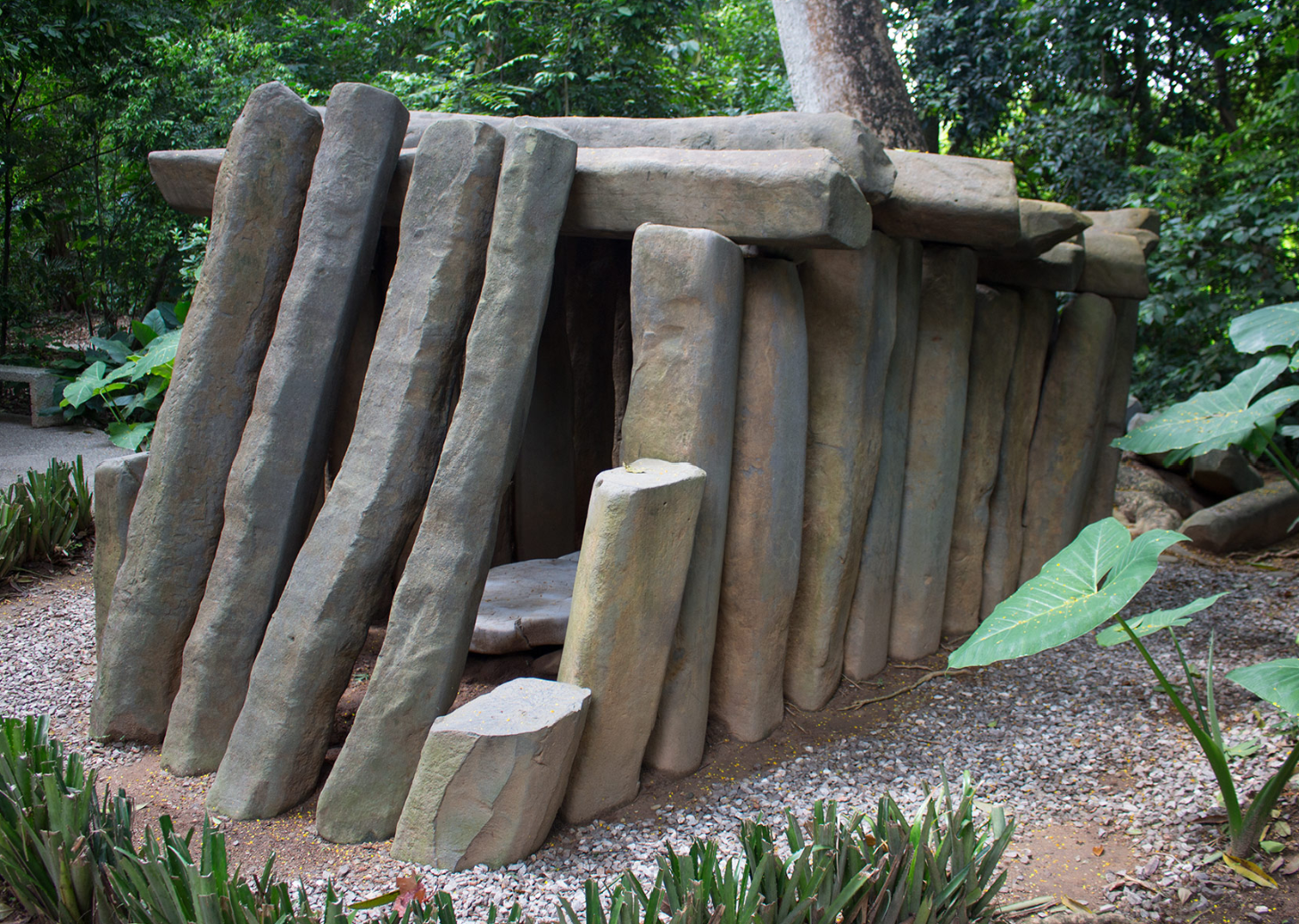
Tomb of Monoliths
Middle Preclassic
c. 900 bce- 300 bce
Olmec
La Venta
subject: stone monoliths, hold 2 bodies, in offering covered floor with limestone slabs
sand colored w/ cinnabar
found ceramic offerince
Elite burials- cinnabar coloring
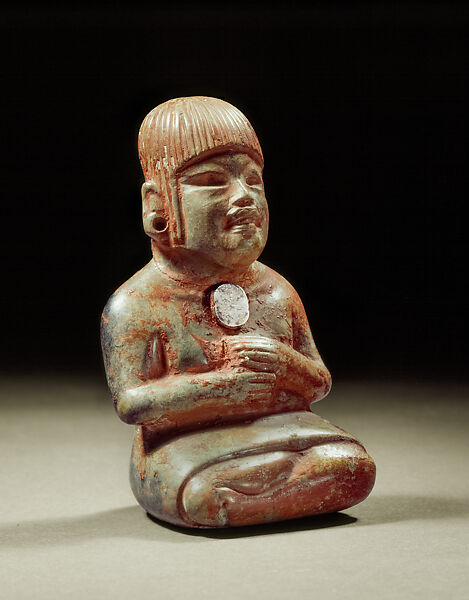
Jade Figure from Tomb of Monoliths
Middle Preclassic
c. 900 bce-300 bce
Olmec
La Venta
subject: Jade occurs naturally in mesoamerica
covered w/ cinnabar, royal burials
fire heat, life source
so polished create mirror reflectivity stone in middle
used in divination
suggest across realms?
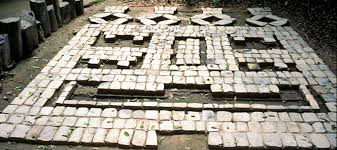
Buried Mosaic Pavement
Middle Preclassic
c. 900 bce- 300 bce
Olmec
La Venta
subject: Mosaic slabs buried, forming giant mask with tassels
divine garment
buried after created
process over product
activated both memory and mystery
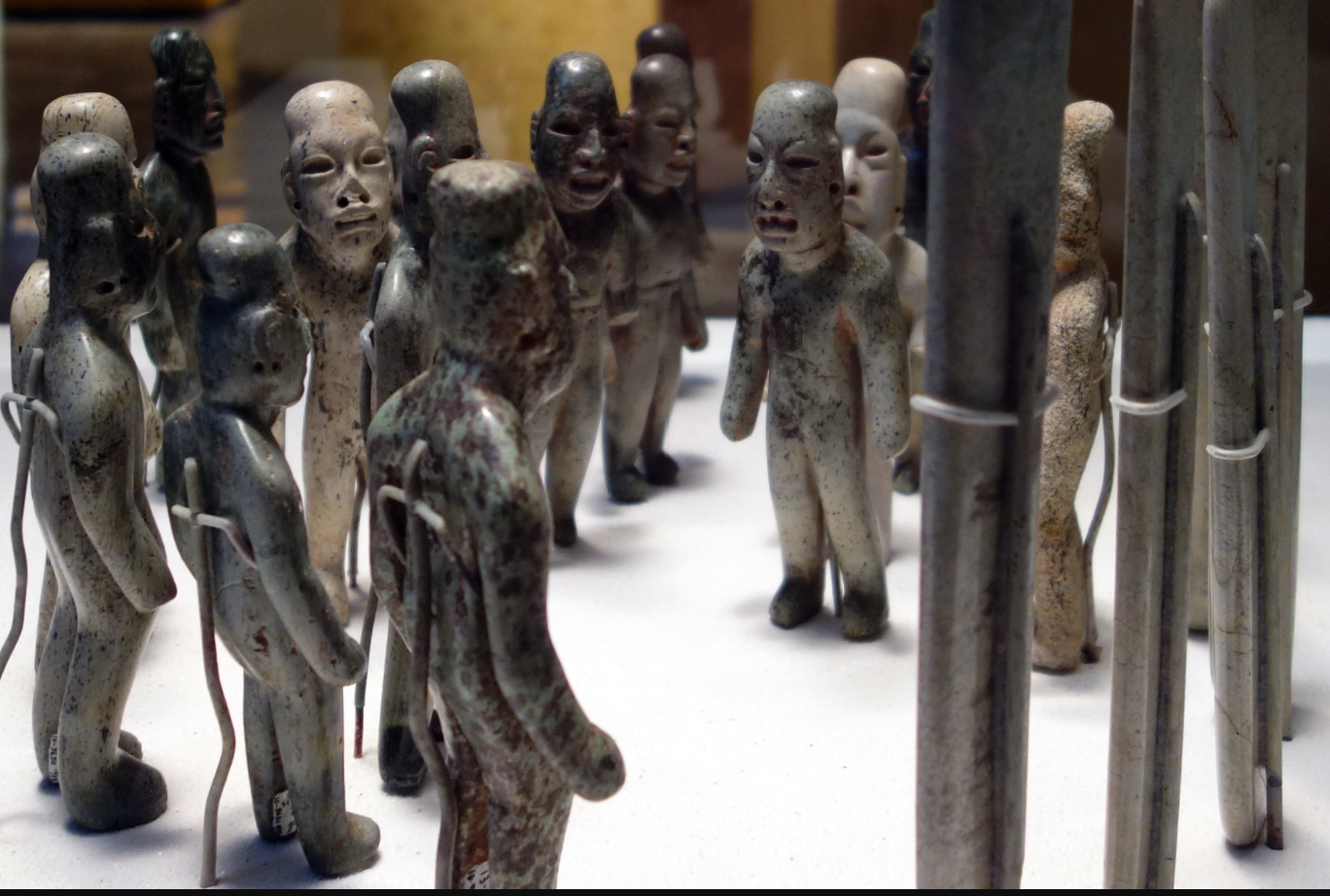
Offering 4
middle Preclassic
c. 900 bce- 300bce
Olmec
La Venta
subject: excavated at the corner of Basalt courtyard
Jade & Serpentine
carved sinewy figurines
Olmec master of material
15 jade and serpentine figures face 1 granite figure
6 celts behind granite fig, architectural setting
recounting La Venta sunken court
reconfirmation of event, buried/unburied/reburied
transformation in words & memories
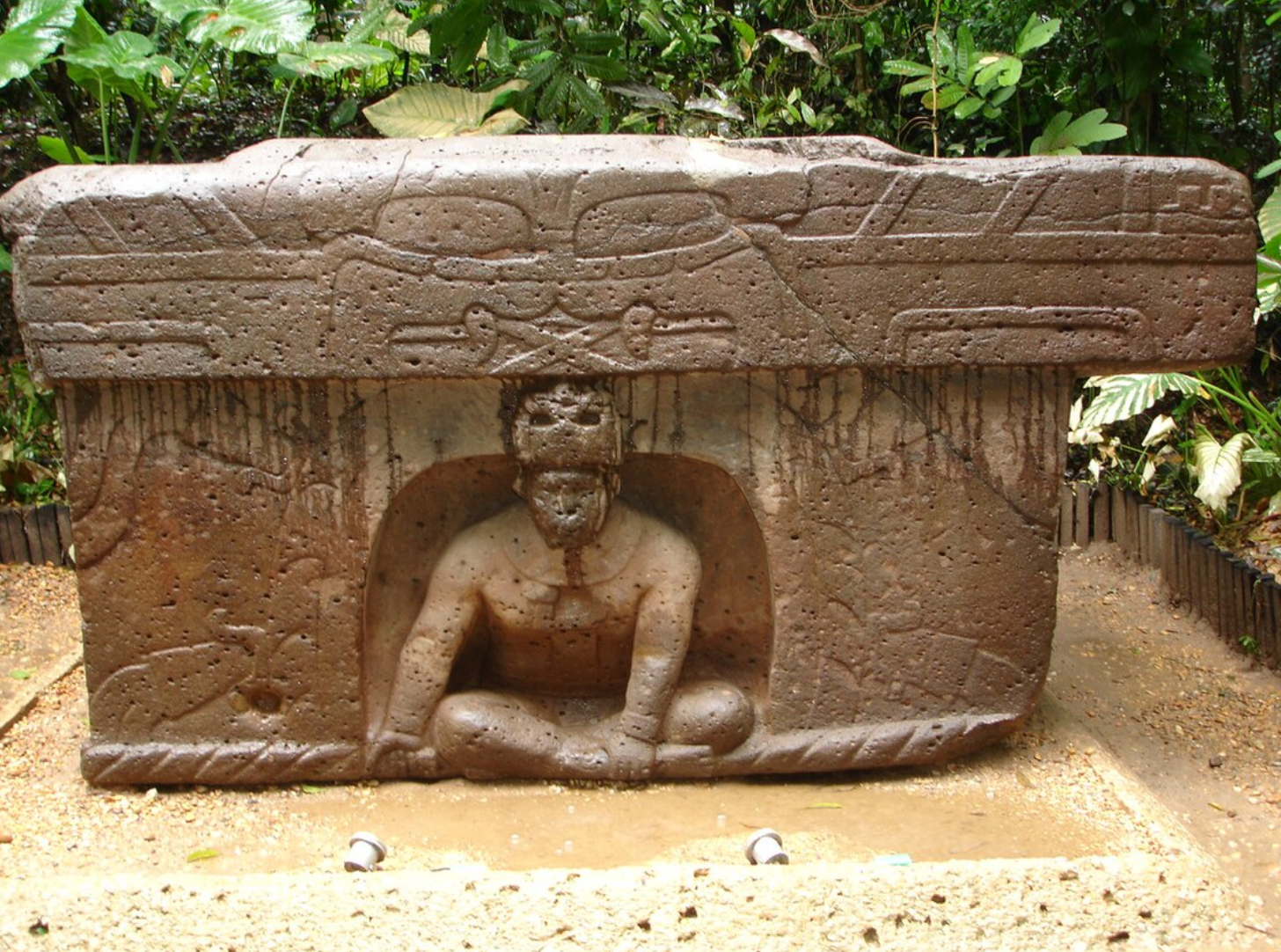
Altar 4
Middle Pre-Classic
c. 900 bce- 300 bce
Olmec
La Venta
subject: throne, for ruler to be seated
manifestation/representation of jaguar pelt
symbol of elite authority
wearing a pectoral, holding rope in hands, goes around
emerging out of cave; underworld
vegetal motif/fangs
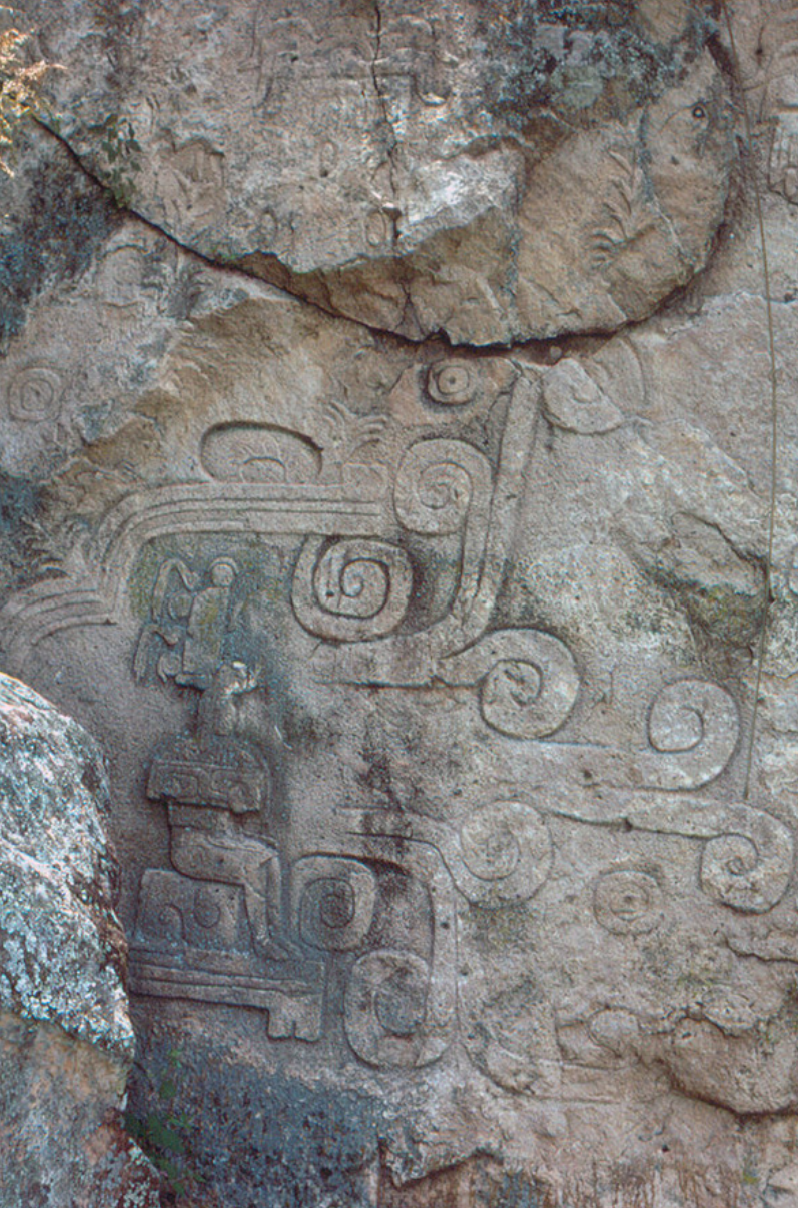
Monument 1 (aka Petroglyph) “El Rey”
Middle Preclassic
c. 900 bce - 500 bce
Olmec
Chalcatzingo
subject: unkown gender, prob female
sits at niche
headress= 2 full body quetzals
raindrops fall on maize plants
vegetal motifs, swirl scrolls= water/clouds/speech
caves r associated w/ sacred rain entities
political authority
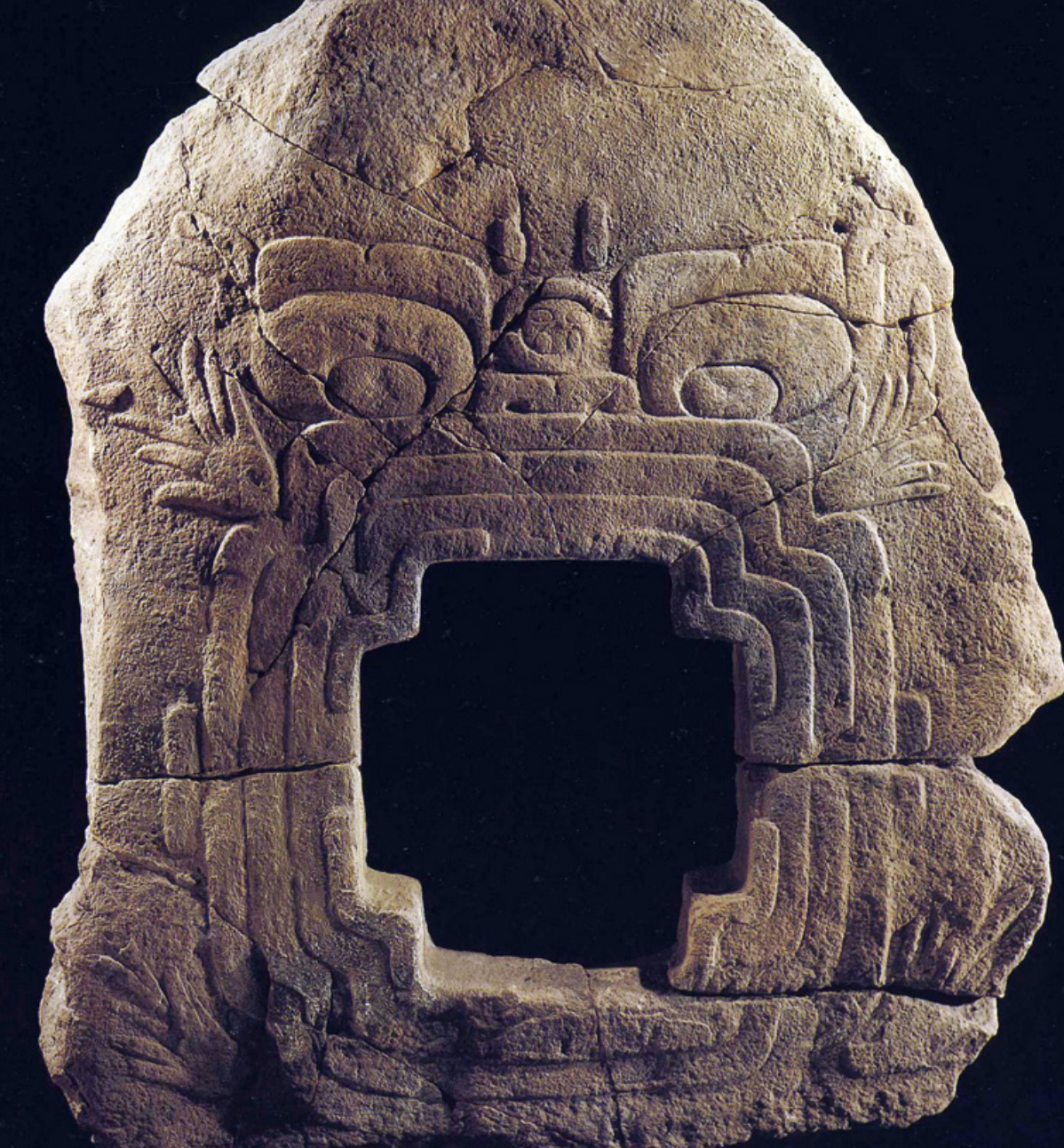
Monument #9
Middle Preclassic
c. 900 bce-500 bce
Olmec
Chalcatzingo
subject: found laying down
opening for people to go inside, 6ft tall
inconographic features “earth monster”
passageway
4 vegetal motifs protruding out of mouth
simulate bromeliad branches, typical in Chalcatzingo
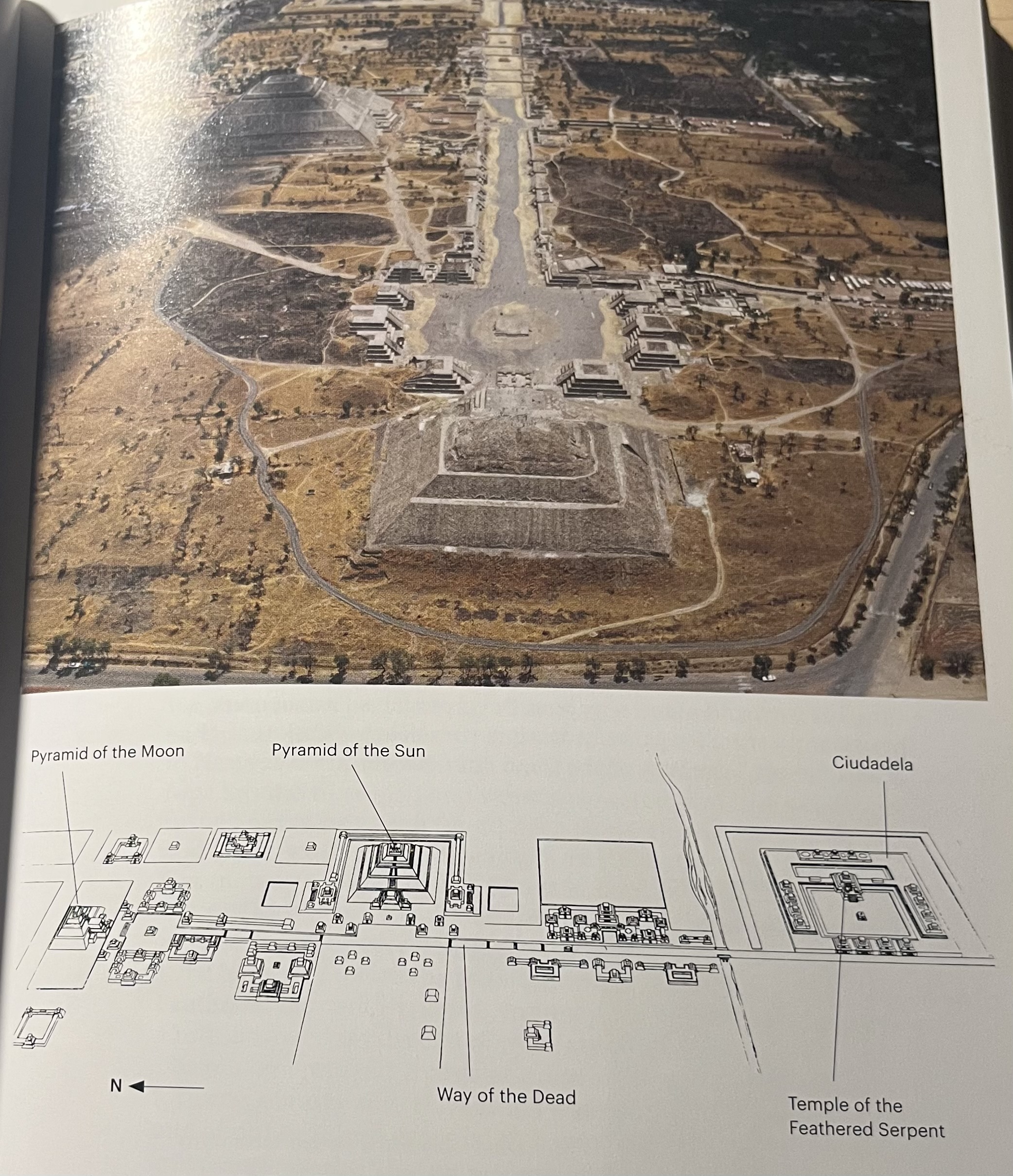
Teotihuacan (aerial view & site plan)
Classic
culture: unknown
c. 100 bce- 700 ce
Teotihuacan, Mexico
subject: high dessert, eastxwest axis, “valley of dead” northx south axis,
1 of the largest cities of the world
surrounded by active volcanos - obsidian
100,050-200,000 people lvingg in Teotihuacan
urban, metropolitian, multiethnic, different barrios
always known, always important, seen as a foundational place
birthplace/place of the gods according to the Aztecs, given name by the Mexica/ Aztecs
3 pyramids
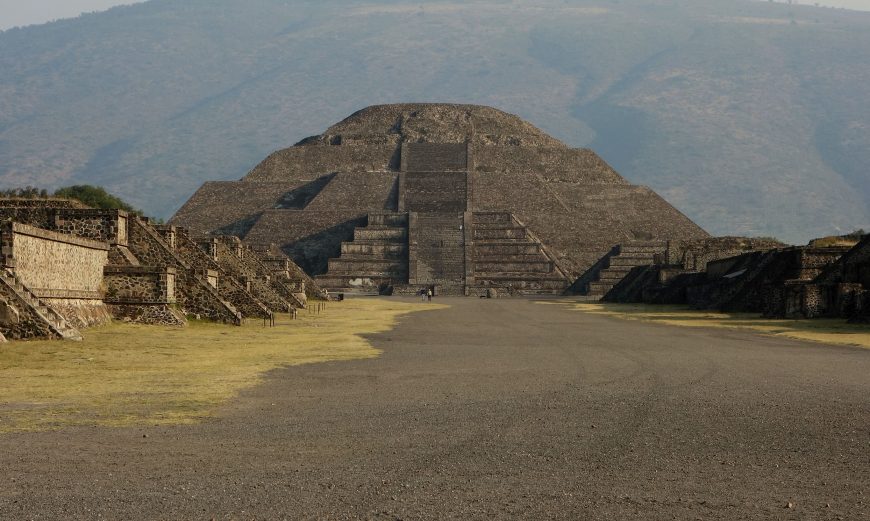
Pyramid of the Moon
Classic
culture: unknown
c. 100 bce- 700 ce
Teotihuacan, Mexico
subject: dont really know if its for the moon
has a grand courtyard
talud-tablero
framed by cleft mountain
tenan- “mother of stone”
important source for water
cave underneath pyramid
situated so it connects underworld
most likely have temple on top with sacred mountains
provide offering in form of burials
build on top of pre-existing building
building becomes more & more sacred
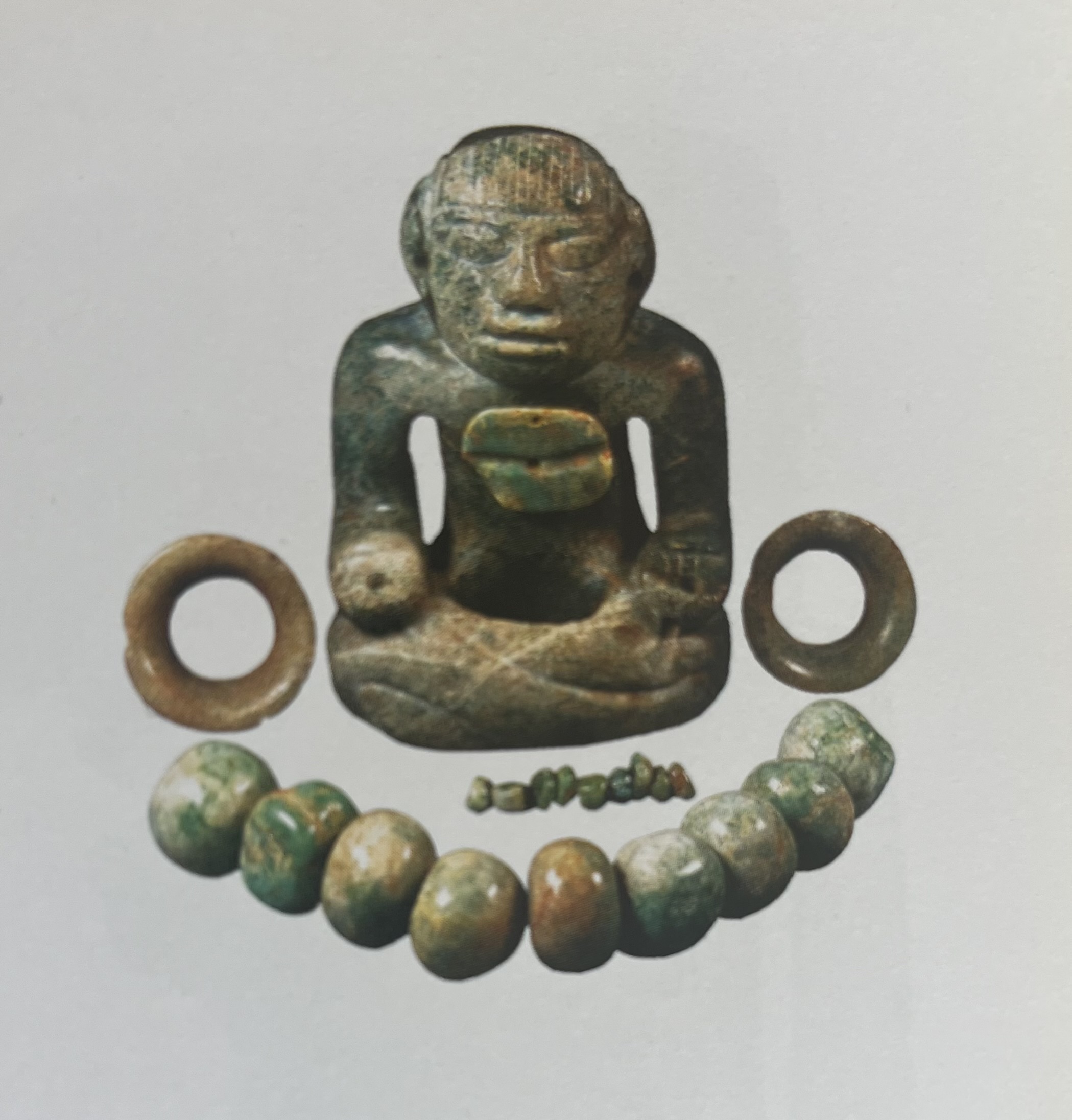
Jadeite Offerings (Burial 5), Pyramid of the Moon
Classic
Culture: unknown
c. 100 bce- 700 ce
Teotihuacan Mexico
subject: prismic/block-like forms, geometric orders
richest burial to come to light in Teotihuacan
3 crossed legged individuals
maybe represented by figure
may have been made by the Maya
unlike any previously known work
Jade beads= echoed water droplets
emphasis on importance of water in relation to offering, community, and ceremonial practice
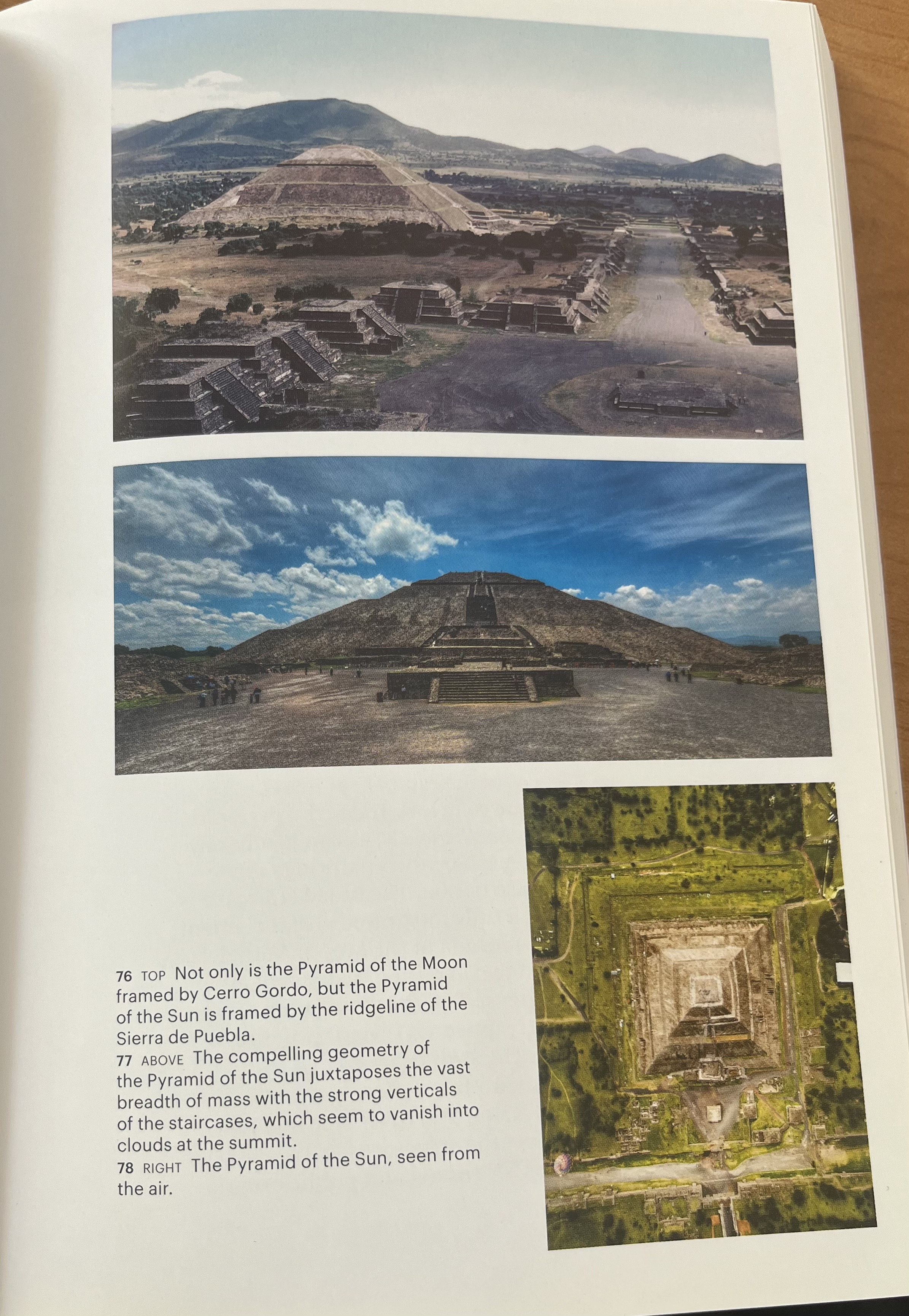
Pyramid of the Sun
Classic
culture: Unknown
c. 100 bce- 700 ce
Teotihuacan Mexico
subject: water is key concern
large stairase, highly restricted place
cave below
man made, could have been lava tunnel
emergence of human kind, place of origin- caves
framed by the ridgeline of the Sierra de Puebla
geometry of the pyramid juxtapose the vast space
as attendants progress upstairs, vanish and re-appear
formed specific backdrops for ceremonial/public events
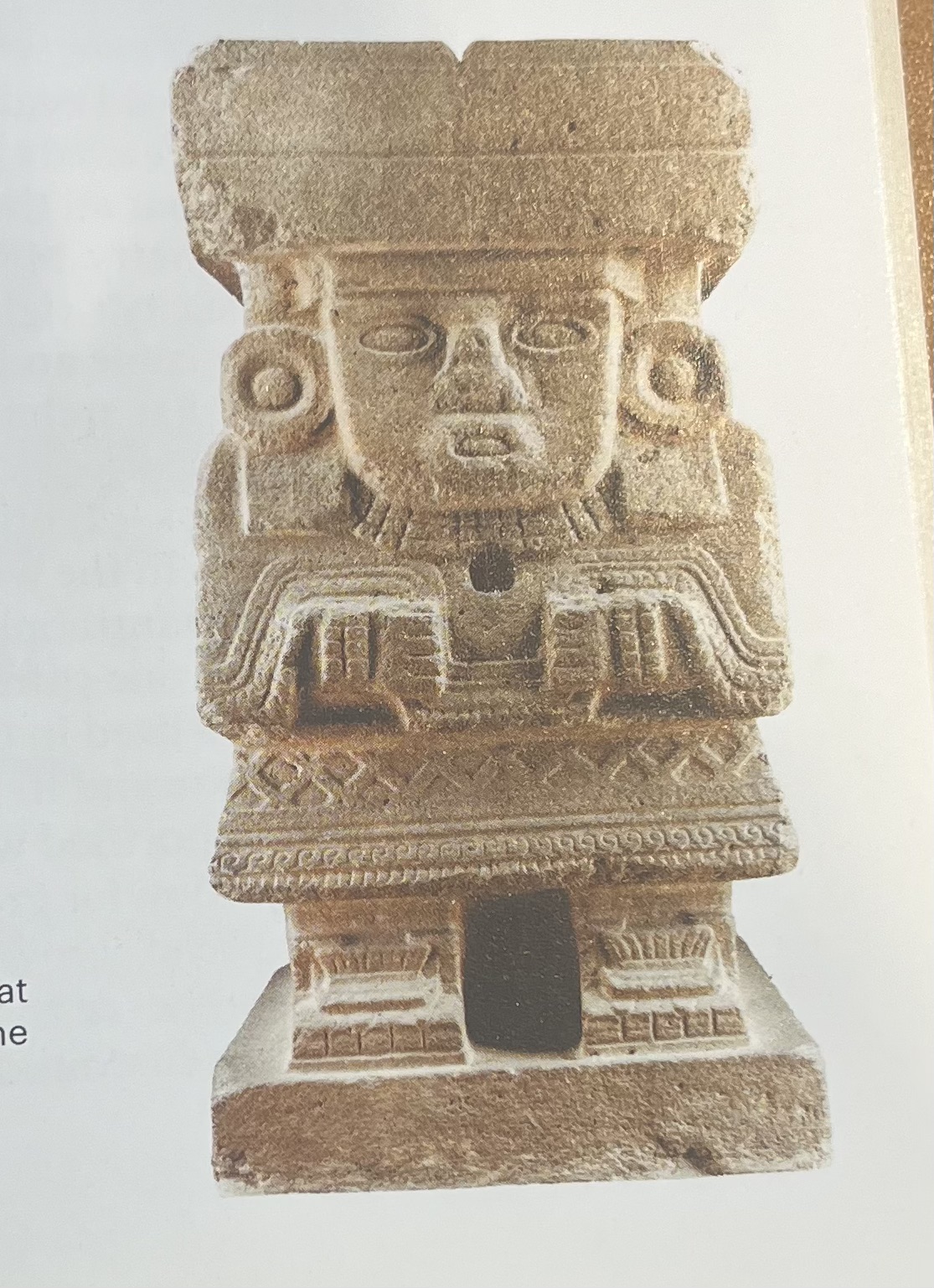
Great Goddess (Pyramid of the Moon and Palace of Quetzalpapalotl)
Classic
culture: unknown
c. 100 bce - 700 ce
Teotihuacan Mexico
subject: stable base meant to keep her in position for ever
monumental sculpture
believed female because of garments , nonbinary maybe
volcanic stone, “heart of the earth”
sacred power
in front of or on top of pyramid of moon
miniaturization of mountain; effigy of effigy
skirt has motifs referring to water
force to channel water
cavity in chest
jade beads, hold garment/squeezing
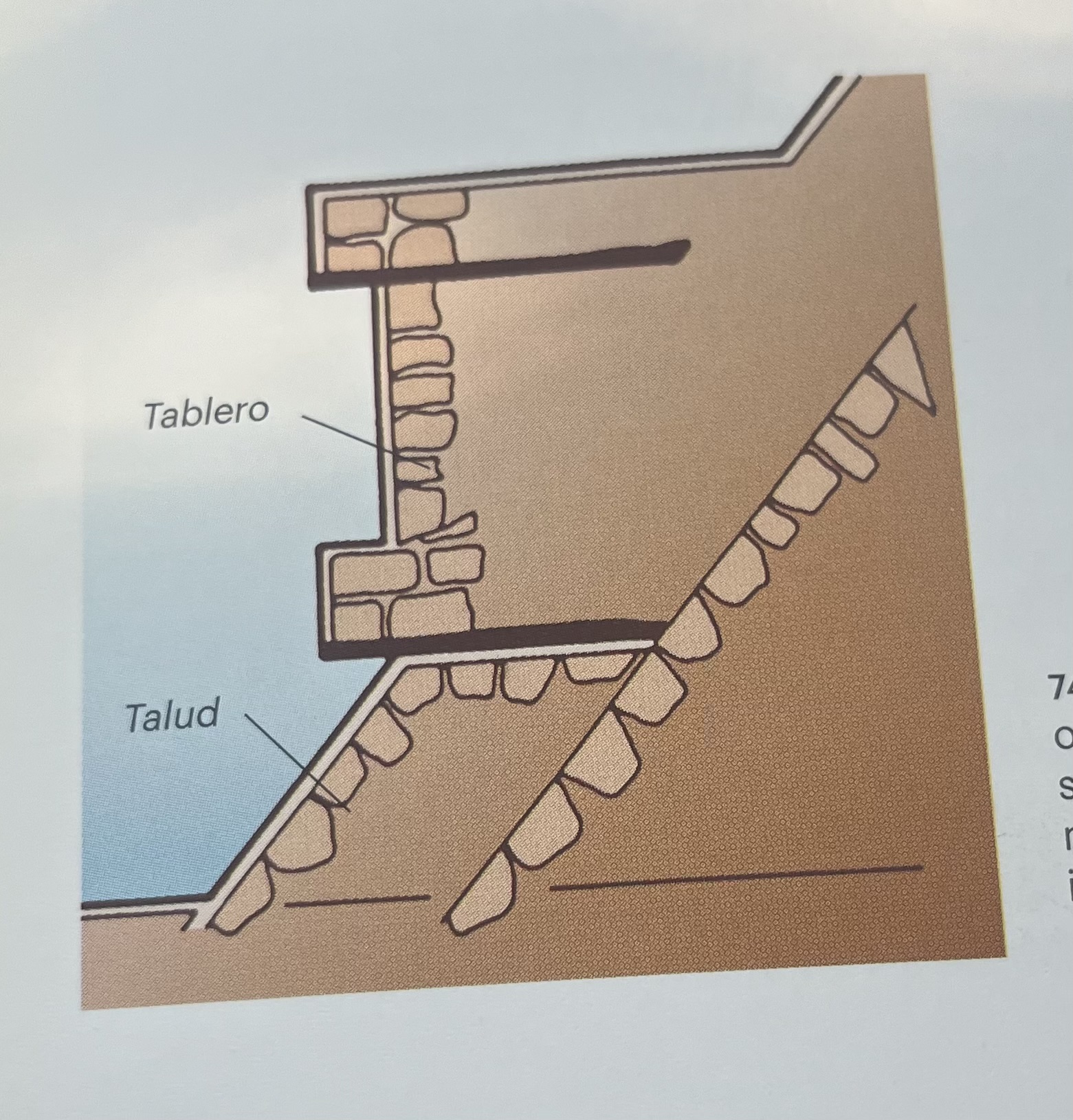
Talud-Tablero
Classic
culture: unknown
c. 100 bce - 700 ce
Teotihuacan, Mexico
subject: distinctive, delineates sacred architecture
sloping= talud, verticle= tablero
surface for architectural ornament or stucco painting
marks presence of Teotihuacan abroad; Kaminaljuyu
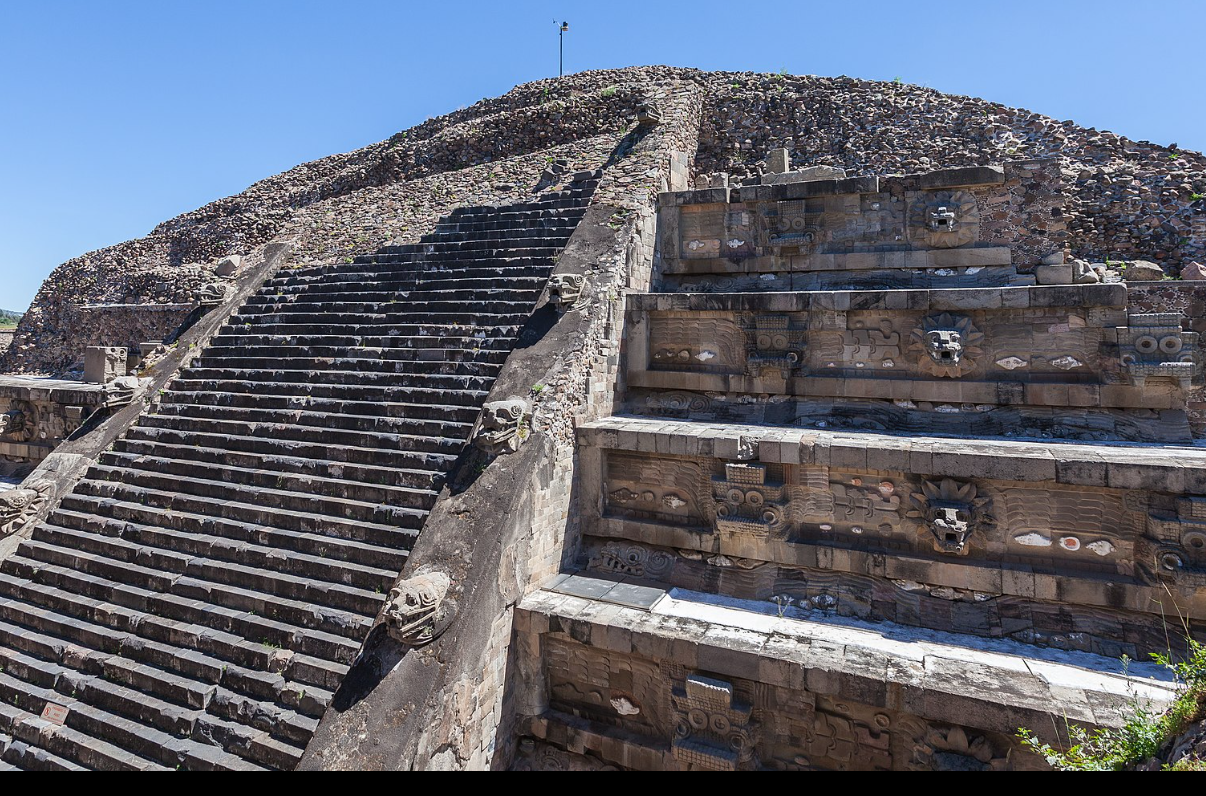
Temple (or Pyramid) of the Feathered Serpent, Quetzalcoatl
Classic
culture: unknown
c. 100 bce- 700 ce
Teotihuacan, Mexico
subject: western margin of a large enclosure
palace of ruler
talud-tablero facade
huge feathered serpent heads, weigh over 4 tons
earliest programmatic painting to survive at Teotihuacan
blue, red, white & yellow can still be seen
hematite as central pigment
man made tunnel that leads to heart of feathered serpent
ends in pools of mercury, four figures stood at edge.
Mesoamerica
Mesoamerica: cultural term, Pual Kirchoff, 1940
grouped together by shared cultural traits
ex: maize cultivation, ballgame, pyramids
calendar system- 260-365 days system
Calendar System
calendar system: 260-365 day system
North America
continent ecnompessing central america and mesoamerica
mesoamerica does not equal central america
Central America
Geopolitical term
large geographic region that includes some of mesoamerica but also costa rice, el salvador, panama
mesoamerica distinction
cultural term
central mex, south mex, west mex, yucatan pen, guatemala, honduras, belize
Teotl
(mexica/aztec) sacred, divine, numinous, powerful
Ear Flares
guages within mesoamerica ec (colossal head 4 olmec)
Elite Burials
when bodies are coated with cinnabar (ex. Tomb of Monoliths Olmec)
Altar
problematic, sacrific which didnt take place in certain areas, euronyous
ex (aftar 4, olmecs)
Teotihuacan
given by the mexica/aztecs
Olmec
clay people
Tenan
“our mother of stone” ex. pyramid of the moon
Altepetl
nauahtl- “water mountain”
alt- water
petl- mountain
metaphor for community, all communities
“altepetl of Teotihuacan
Chicomoztoc
place of seven caves, mythology aztecs
quetzalcoatl
feathered serpent
Talud-Tablero
architectural profile of Teotihuacan
ex. pyramid of the feathered serpent
Preclassic (aka formative)
1200 bce- 100/250 ce
early, middle, late
Classic
100/250 ce - 900 ce
early, late classic
post classic
900 ce - 1521 ce
early , late postclassic